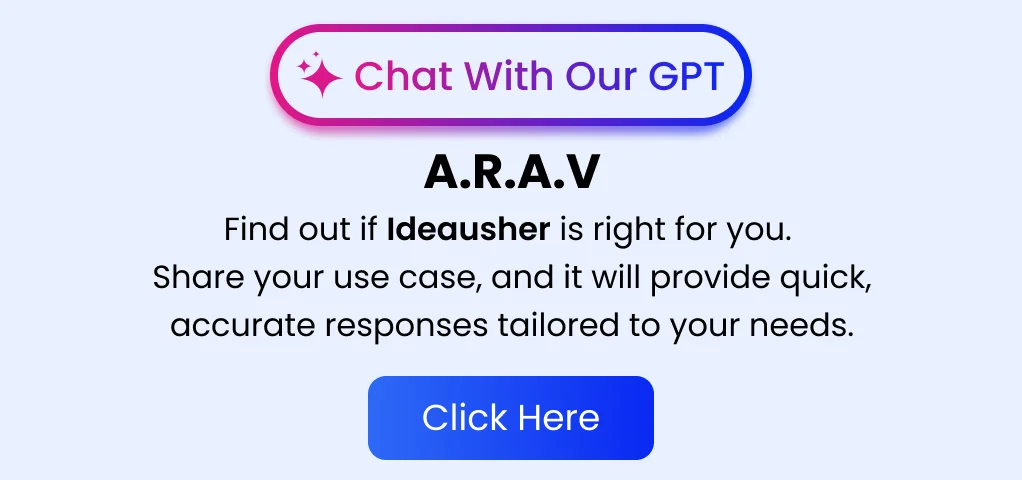The need for effective senior care is growing rapidly as our global population ages. With over 1.5 billion people expected to be 65 or older by 2050, meeting their care needs is becoming increasingly urgent. Consequently, senior care apps are now essential. They address the challenges posed by an aging population, chronic health issues, safety concerns, and the desire for greater independence.
Traditional care methods are struggling to keep up, which is why technology is stepping in to provide better solutions. These apps improve safety and independence along with overall accessibility for seniors, which is why, with the adoption of these new technologies and app concepts, we can prepare for a future where senior care remains both effective and compassionate. Therefore, in this blog, we will explore the development process of senior care apps and analyze ways to create solutions that address the needs of seniors while ensuring they are effective, user-friendly, and supportive of independence.
Senior Care Applications: Overview
Senior care apps are designed to assist seniors and their caregivers in managing health, safety, and daily tasks. These tools offer features such as medication reminders, health monitoring, emergency alerts, and location tracking. Additionally, they support social interaction through video calls and social platforms, which helps seniors stay connected with their caregivers and one another. For added convenience, they also provide transport services and assist with tasks like grocery delivery and home maintenance. Moreover, AI-powered features within such apps help in analyzing health data, deliver personalized recommendations, and offer virtual companionship. Basically, these apps improve the quality of life for seniors but provide peace of mind for caregivers.
Key Features Of Senior Care App
Senior care applications integrate a range of advanced functionalities customized to support the well-being of elderly individuals and their caregivers. Some of the essential features include:
- Medication Reminders: Scheduled notifications ensure timely medication adherence, reducing the risk of missed doses.
- Vital Signs Monitoring: Continuous tracking of critical health indicators such as blood pressure and glucose levels provides real-time health insights.
- Emergency Alerts: Automated alerts notify designated contacts in case of falls or urgent situations, facilitating swift intervention.
- Location Tracking: Real-time GPS tracking enables caregivers to monitor the movements and whereabouts of their loved ones for added safety.
- Video Communication: High-quality video calling capabilities maintain connections with family and friends, eliminating isolation.
- Social Media Integration: Seamless connection to social platforms encourages engagement and interaction.
- Transportation Access: Integration with ride-hailing services and public transit information simplifies travel and mobility.
- Grocery and Delivery Services: Easy ordering and delivery of groceries and essential items enhance convenience.
- Home Management Tools: Scheduling features for home maintenance and smart device controls improve daily living.
- AI Health Analytics: Advanced algorithms analyze health data to offer predictive insights and early warnings.
- Virtual Companions: AI-driven chatbots provide emotional support and interactive engagement.
Features of Senior Care App Panels:
| User Panel | Caregiver Panel | Admin Panel |
| User Profile Management | Patient Appointment Management | User Account Management |
| Care Schedule | Task Assignment | Caregiver Scheduling |
| Medication Tracking | Medication Administration | Monitoring Care Activities |
| Health Records Access | Health Monitoring | Report Generation |
| Emergency Call/SOS | Emergency Response | Analytics and Insights |
| Communication with Caregivers | Communication with Users | System Configuration |
| Daily Health Reporting | Daily Health Reporting | User Role Management |
| Appointment Scheduling | Appointment Scheduling | Data Security and Compliance |
| Reminders and Notifications | Reminders and Notifications | Notification Management |
| Document Access and Sharing | Document Access and Sharing | Audit Logs |
| Activity Tracking | Activity Tracking | Integration with External Systems |
| Health Tips and Resources | Health Tips and Resources | Performance Monitoring |
| Feedback and Reviews | Feedback and Reviews | System Maintenance |
| In-App Calling and Live Chat | In-App Calling and Live Chat | Backup and Recovery |
| Video Conferencing with Doctors | Video Conferencing with Doctors | Fraud Detection and Prevention |
How Does The Senior Care App Work?
Senior care apps function by integrating various technologies to support the needs of elderly individuals and their caregivers.
- Setting Up Your Profile: You start by entering your personal details and medical history. This helps the app adjust to your specific needs.
- Tracking Health: The app connects with devices like fitness trackers to monitor important health metrics, such as blood pressure and heart rate.
- Medication Reminders: It sends you reminders to take your medicines and keeps track of your medication schedule. If you miss a dose, your caregivers are notified.
- Emergency Alerts: If there’s an emergency, you can quickly alert your family or emergency services with a button.
- Location Tracking: The app uses GPS to show your location to your caregivers so they know where you are.
- Staying Connected: You can make video calls and send messages to keep in touch with family and friends.
- Managing Appointments: The app helps you remember appointments and daily tasks.
- House Help: You can arrange for grocery deliveries and home repairs through the app.
- AI Features: Some apps use AI to give you health tips, analyze your data, and even offer virtual companies.
Market Takeaways For Senior Care Applications
The aging population is growing globally. The United Nations reported that in 2019, there were over 700 million people aged 65 and older. This number is expected to double to 1.5 billion by 2050.
This increase is largely due to advances in healthcare and other factors that improve survival rates beyond age 65. Additionally, a decline in smoking and unhealthy eating habits is expected to extend average life expectancy by 15-20 years by 2050.
Given these trends, elder care app development is emerging as a highly promising field within health tech. The growing number of seniors represents a significant market opportunity. Furthermore, the economic contributions of people aged 50 and over are projected to rise from $8 trillion in 2018 to more than $28 trillion by 2050.
Additionally, another report suggests that the global market for elderly care services was valued at $1,025.43 billion in 2023. It is expected to reach $1,965.99 billion by 2032, growing at a rate of about 7.50% annually from 2024 to 2032.
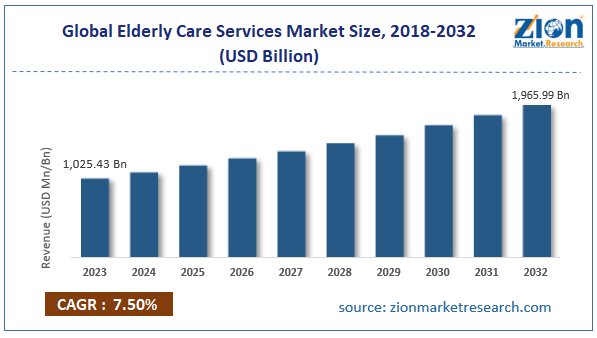
Given these factors, investing in mobile apps for elder care presents a profitable opportunity.
Types Of Elderly Care Applications
Custom senior care apps address a wide range of issues related to aging. Below are some key types of elderly care apps that can meet the needs of older adults and their caregivers:
1. Chronic Disease Management Apps
As people age, the likelihood of developing chronic conditions such as diabetes, high blood pressure, and arthritis increases. These apps allow users to manage their health more effectively by providing essential features like:
- Medication tracking and dosage calculations.
- Reminders for refills and prescriptions.
- Tips and advice for managing chronic conditions.
- E-prescription handling to reduce manual paperwork.
With over 85% of adults aged 65 and older living with at least one chronic condition, these apps play a vital role in healthcare.
2. Home Safety Apps
Falls and accidents are common among seniors, with millions of falls reported annually. Home safety apps help reduce risks through advanced features such as:
- Walking pattern analyzers to detect instability or fall risks.
- Automatic fall detection and emergency alerts.
- Video surveillance and audio monitoring for remote care.
- IoT integrations with sensors and geolocation for real-time tracking.
These apps enable caregivers to monitor their loved ones and provide timely assistance in case of emergencies.
3. Cardio And Fitness Management Apps
Aging can lead to reduced physical activity, which increases the risk of chronic diseases and obesity. Fitness apps designed for seniors help them maintain physical health with features like:
- Custom exercise plans suited to older adults.
- Geriatric diet plans and calorie tracking.
- Activity monitors for tracking steps, heart rate, and sleep patterns.
- Health tips and reminders to stay active and maintain cardiovascular health.
Regular physical activity can greatly improve mobility and prevent health deterioration in the elderly.
4. Mental Health And Cognitive Function Apps
Mental health and cognitive decline are major concerns for seniors, often leading to conditions such as depression, anxiety, and memory loss. Cognitive health apps provide support with features like:
- Brain games and puzzles to maintain cognitive functions.
- Meditation and relaxation tools to reduce anxiety and stress.
- Virtual therapy sessions and access to mental health professionals.
- Daily memory aids and reminders to assist with routine tasks.
- Social engagement features to reduce loneliness and isolation.
These apps can help seniors maintain their mental health and connect with others more easily.
5. Nutrition And Meal Planning Apps
Seniors often face challenges in maintaining a balanced diet, whether due to mobility issues or lack of nutritional knowledge. Nutrition-focused apps provide valuable support with:
- Personalized meal plans based on dietary requirements.
- Grocery list creation and delivery integration.
- Nutritional value calculators and calorie tracking.
- Easy-to-follow recipes designed for seniors.
- Reminders for hydration and regular meals.
Such apps ensure that older adults receive the proper nutrients needed to maintain their health and well-being.
Benefits Of Senior Care App
Senior care apps offer numerous advantages that improve care management, communication, health monitoring, and overall quality of life for seniors while improving operational efficiency for caregivers and healthcare providers.
- Simplified Care Management: These apps make it easier to track medications, appointments, and daily tasks, reducing the burden on caregivers.
- Improved Communication: Video calls and messaging tools keep families and caregivers connected, ensuring continuous support and reducing stress.
- Health Monitoring: Real-time tracking of vital signs and activities helps caregivers and healthcare providers respond to health issues promptly. Integration with health devices also enables monitoring of chronic conditions.
- Cost Efficiency: Automating routine tasks like scheduling and reporting helps allocate resources efficiently, leading to cost reductions in care management.
- Data-Driven Insights: Healthcare providers gain valuable insights from detailed analytics, allowing them to tailor care plans and make better-informed decisions.
- Increased Independence: Seniors can manage their health and medication more effectively, leading to greater autonomy and self-reliance.
- Enhanced Safety: Features like emergency alerts and GPS tracking provide added security, helping seniors feel safer both at home and when they are out.
- Operational Efficiency: Care facilities and administrators can streamline operations, saving time through automated scheduling and tracking tools, which enhances overall productivity.
Must-have Features For Senior Care Applications
Here are the must-have features you can consider for senior care applications:
1. Medication Reminders
Senior care apps benefit greatly from features that help users stay on track with their medication. These apps notify individuals when it’s time to take their medications and can also alert caregivers if doses are missed. This keeps medication schedules organized and reduces health risks caused by skipping doses.
Example: Medisafe allows users to set customized medication reminders. It tracks adherence and shares this information with caregivers, reduces the chances of missed doses, and enhances overall health compliance.
2. Health Monitoring Tools
Tracking vital health data such as heart rate, glucose levels, and blood pressure is important. Many apps link to wearable devices that automatically track these stats and upload them to the app. This helps caregivers keep an eye on the user’s well-being and allows early detection of any potential health issues.
Example: CarePredict utilizes smart wearables that monitor daily activities and vital signs. This data is then analyzed to detect deviations from normal health patterns. It helps caregivers intervene before a serious problem arises.
3. Emergency Response
Emergency features in senior care apps offer immediate access to help. These apps can send emergency alerts to family members or emergency services if an incident, such as a fall, is detected. A quick response can prevent further complications.
Example: Snug Safety provides daily check-ins, and if the user doesn’t respond within a certain time, it automatically alerts emergency contacts. This feature ensures rapid assistance in emergencies and offers peace of mind to both users and caregivers.
4. Social Features
Maintaining social connections is key to the mental well-being of seniors. Apps offering video calls and messaging features help users stay in touch with their loved ones. Reducing isolation has a positive impact on emotional health.
Example: CaringBridge helps seniors share health updates and stay connected with their social circle. The platform promotes ongoing communication, which helps prevent social isolation and encourages emotional support.
5. Fall Detection Systems
Automatic fall detection is an important safety feature in senior care apps. It immediately detects falls and triggers alerts to designated caregivers or emergency services. This reduces the risk of injury and speeds up medical intervention.
Example: Apple Watch incorporates advanced fall detection technology. When a fall is detected, it sends alerts to emergency contacts or services if the user doesn’t respond, ensuring quick intervention.
6. Transport Solutions
Access to reliable transportation is important for seniors, whether it’s for medical appointments or errands. Some apps link with ride-hailing services, making transportation easy and reducing dependency on others.
Example: Uber Health provides non-emergency medical transportation, offering seniors access to safe and reliable rides to appointments. It also allows healthcare providers to arrange transportation for their patients and make sure that they get to their appointments on time.
7. Household Management
Managing daily tasks like grocery shopping or home maintenance can be challenging. Some apps offer features that arrange for groceries to be delivered or home services to be scheduled, helping seniors manage their households with ease.
Example: Instacart enables seniors to order groceries online and have them delivered to their doorsteps. This service reduces the need for trips to the store, especially for seniors with mobility challenges.
8. Telehealth And Video Consultations
Telehealth options give seniors the ability to meet with doctors without leaving their homes. This saves time, lowers risks, and helps them receive timely medical attention without needing to travel.
Example: Teladoc provides seniors with the ability to schedule video consultations with healthcare providers. This service is particularly beneficial for those who need frequent consultations but have difficulty traveling.
9. Family and Caregiver Access
Family members or caregivers often want to be involved in the care process. A portal feature in these apps allows them to track the progress of seniors’ care, communicate with doctors, and manage day-to-day care needs.
Example: CareLinx connects families with professional caregivers and offers a platform for care coordination, where family members can track the care being provided, communicate with caregivers, and ensure proper management of care routines.
10. User-Friendly Interface With Accessibility Features
User-friendly design is important for seniors who may not be familiar with technology. Apps with large buttons, voice control, and simplified navigation make it easier for seniors to use independently.
Example: GrandPad is a tablet designed with seniors in mind. Its large buttons, straightforward layout, and voice controls make it easy for seniors to navigate without frustration, improving their experience with technology.
Development Steps For Senior Care Applications
Developing an effective senior care app requires a thoughtful approach to address the specific needs of older adults. Here’s how you can develop a senior care app that meets these needs:
1. Design For Simplicity
Create a simple, easy-to-use interface for seniors. Avoid complicated designs and focus on a clean interface with large, readable fonts and simple navigation. Include easy-to-understand instructions and visual aids such as icons and color-coded alerts. Make sure that users can quickly access key functions like medication reminders, emergency calls, and health tracking features.
2. Focus On Accessibility
Make sure the app is accessible to all users. Implement voice recognition and commands to help those with mobility issues. Design the app with high-contrast color schemes to enhance visibility for users with impaired vision. Make sure that your app is compatible with assistive technologies like screen readers and magnifiers, which can allow users to interact with the app effectively.
3. Address Physical Challenges
Design the app to accommodate physical limitations. Make sure that the app is optimized for touch responsiveness. Adjust touchscreen sensitivity settings to ensure accurate input for users with limited dexterity. Include large, easily tappable buttons and incorporate haptic feedback to confirm user actions. These features make the app more accessible and user-friendly for seniors.
4. Promote Social Connections
Help seniors stay connected with family and friends for their mental well-being. Add video calling, messaging, social media connectivity, and community forums. Offer personalized content based on user interests and preferences to keep them engaged and connected and reduce feelings of loneliness.
5. Prepare For Emergencies
Include features for emergency situations. Add a prominent SOS button that can be activated quickly in emergencies. Use geolocation to assist with location-based services and emergency responses. If possible, include fall detection to alert caregivers or emergency services automatically when a fall is detected.
6. Simplify Medication Management
Make managing medications easy for seniors. Display medication information in a clear and organized manner with visual aids such as color-coding to help identify pills. Set up automated reminders for medication intake and refilling prescriptions. Allow users to manage e-prescriptions directly through the app to simplify their medication regimen.
7. Connect With Healthcare Providers
Allow the app to work with healthcare systems. Securely share health data and allow users to schedule appointments directly through the app. Include telehealth features for virtual consultations and make it easier for seniors to access medical advice and follow-up care from their healthcare providers.
8. Adapt To Cultural And Regional Needs
Make the app suitable for various cultures and regions. Offer language localization to accommodate different languages and dialects. Design the app with cultural sensitivity in mind, adapting features and content to respect and meet the needs of various cultural backgrounds.
9. Test With Senior Users
Involve seniors in the testing process to get valuable feedback and address usability issues related to the app’s functionality, ease of use, and overall design. Use this feedback to make improvements specific to older adults. Their feedback will help improve the app’s design and functionality for your actual target audience.
Making Elder Care Apps Accessible For People with Disabilities
To ensure that your elder care app is usable by everyone, including people with disabilities, follow these key steps:
- Simplify Navigation: Create clear, easy-to-follow paths for users. Use voice instructions or text overlays to help users understand each step.
- Add Accessibility Features Early: Include features like screen readers (e.g., VoiceOver for iPhones, TalkBack for Android) from the beginning. Test these features regularly to make sure they work well.
- Make Interactive Elements Easy to Use: Design buttons and icons to be large and spaced out so they are easy to tap, even for users with limited motor skills.
- Organize Content Clearly: Arrange your app’s content in a logical order. Use simple labels for menus and controls to make it easier for users to find what they need.
- Ensure Compatibility Across Devices: Make sure your app works well on different devices and screen sizes. Allow text to be resized without losing functionality, and use colors that provide good contrast.
- Use Descriptive Text for Images: Provide clear descriptions for images so that screen readers can explain them to users who can’t see them.
- Improve Text Readability: Choose easy-to-read fonts and use high-contrast colors to make text more readable for users with vision impairments.
- Test with Real Users: Involve people with disabilities in testing your app to ensure it meets their needs and is easy to use.
- Work with Disability Groups: Collaborate with organizations that support people with disabilities to get their feedback and improve your app’s accessibility.
Tech Stack For Senior Care App Development
Here are the tech stack required to develop a senior care app:
| Category | Technology | Key Considerations |
| Frontend | React Native, Flutter | Cross-platform development, accessibility (VoiceOver, TalkBack) |
| Backend | Node.js, Firebase, AWS Amplify | Scalable, real-time services, serverless integration |
| Database | Firebase Realtime, DynamoDB | NoSQL, real-time sync, high performance |
| APIs & Integrations | HealthKit, Google Fit, Stripe, PayPal | Health data tracking, payment gateways, location-based services (Google Maps, Twilio) |
| Security | OAuth, Firebase Auth, Encryption | User authentication, data encryption, regular audits |
| Accessibility | VoiceOver, TalkBack, WCAG | Visual and mobility support, color contrast, keyboard navigation |
Some Revenue Generating Methods For Senior Care App
Here are some effective strategies for generating revenue in the senior care app market:
1. Subscription Plans
Offering different levels of subscription plans allows users to choose what suits their needs. A basic plan could include reminders for medications, while higher plans might offer caregiver access, health tracking, and detailed reports. Family plans with discounts can encourage multiple members to use the app, making it cost-effective for households. These options allow users to pick services based on what they need and can afford.
2. Pay-for-Service Options
Apps can generate income by offering extra services for a fee. This is ideal for users who don’t want to commit to expensive plans but still want occasional services. Examples include virtual health consultations, access to fitness routines, or real-time tracking of health data. This model lets users pay only when they need something extra, keeping the app affordable and flexible.
3. Healthcare Partnerships
Working with hospitals and clinics can bring in revenue. Apps can share health data with these institutions through integration with EHR. These partnerships can also include referral programs where the app earns fees for new users that healthcare providers refer to. Another way to boost income is to offer a package deal with healthcare services, where users get discounts on medical services through the app.
4. Data Monetization
Senior care apps collect valuable data that can be shared as long as user privacy is protected. Anonymized data can be sold to researchers or healthcare companies interested in studying senior health trends. Additionally, the app can offer insights based on this data to healthcare providers, which can be sold as reports. This creates a steady income stream without compromising user privacy.
5. Advertising
Including ads can provide extra income, but it’s important not to overwhelm users. Ads for senior-related products, like medical supplies or health insurance, can bring in money without disrupting the user experience. Sponsorships for content, such as health tips or product tutorials, can also be a source of revenue. Users who don’t want ads can be given the option to pay for an ad-free experience.
6. Caregiver Services
Senior care apps can also offer services to caregivers. Paid caregiver training or certification programs can attract families and professionals looking to improve their skills. Premium support services, such as access to healthcare advice and tools to track the senior’s health, can offer more value and create an additional revenue stream.
7. Government Grants
Government support for healthcare technology can help you get financial backing. Grants or subsidies are available for senior care apps that offer healthcare services. This funding can reduce the cost of app development and marketing. Additionally, tax benefits might be available for apps that provide healthcare-related services, increasing overall profitability.
Cost Of Developing A Senior Care App
Here is the breakdown of the cost of developing a senior care app with specific features:
| Feature | Minimum Cost | Maximum Cost |
| Research and Planning | $500 | $3,000 |
| Frontend Development | $1,000 | $18,000 |
| Backend Development | $1,500 | $21,500 |
| Core Features Development | – | – |
| Medication Reminders | $500 | $3,000 |
| Health Monitoring | $100 | $6,500 |
| Emergency Assistance | $500 | $3,500 |
| Social Connectivity | $500 | $3,000 |
| Fall Detection and Alerts | $1,000 | $6,000 |
| Transportation Services | $500 | $3,500 |
| Home Management | $500 | $4,000 |
| Telehealth and Video Consultations | $1,000 | $5,000 |
| Family/Caregiver Portal | $500 | $4,000 |
| User-Friendly Interface with Accessibility Features | $500 | $5,000 |
| Testing and Quality Assurance | $400 | $3,000 |
| Deployment and Maintenance | $500 | $3,000 |
| Marketing and Promotion | $500 | $8,000 |
| Total Cost Range | $10,000 | $100,000 |
Cost-Affecting Factors To Consider For Senior Care App
Understanding the costs associated with developing a senior care app involves several key factors. Each factor impacts the overall budget differently:
- Health Data Integration: Integrating health records and monitoring devices into the app can be expensive. This process requires secure data handling and adherence to health regulations, which adds to the cost.
- Accessibility Features: Designing features for ease of use, like large buttons and voice commands, is essential for seniors. The cost varies depending on how customized and thoroughly tested these features are.
- Emergency Response Systems: Adding real-time alerts and fall detection systems requires complex technology and integration with emergency services. This increases the development cost due to the need for reliable, real-time processing.
- Medication Management: Features that track medication schedules and send reminders involve moderate costs. The complexity of these systems affects the overall budget, especially if advanced features are included.
- Telehealth Integration: Integrating secure video conferencing for virtual consultations adds significant costs. The need for high-quality video, secure transmission, and integration with health systems drives up the price.
- Social Connectivity: Features for social interaction, like video calling and community forums, help reduce isolation among seniors. Costs here depend on the depth of integration and user engagement features.
- Wearable Device Integration: Connecting with wearable devices for monitoring health and activity involves higher costs. This includes the need for real-time data exchange and ensuring compatibility with various devices.
- Personalized Care Plans: Using AI to create personalized care plans increases costs due to the need for sophisticated algorithms and data analysis.
- Compliance with Regulatory Standards: Ensuring the app meets health data regulations like HIPAA involves high costs. This includes security measures and regular audits to maintain compliance.
- Family/Caregiver Portal: Developing a portal for families and caregivers to monitor and manage care adds moderate costs. The price depends on the level of access and features provided.
Top 5 Leading Senior Care Apps
Here are the five top senior care apps, each offering unique features to support elderly individuals and their families.
1. Medisafe
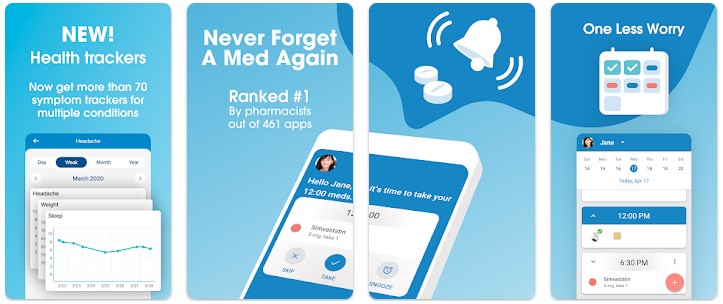
Medisafe helps seniors keep track of their medications. It sends reminders about when to take medicine, tracks dosages, and alerts caregivers if a dose is missed. This helps prevent mistakes and ensures that seniors stick to their medication schedule.
2. CarePredict

CarePredict uses wearable devices to monitor health and daily activities. It tracks important health data in real-time, which helps spot potential health problems early. This allows for quick action and better health management.
3. Snug Safety
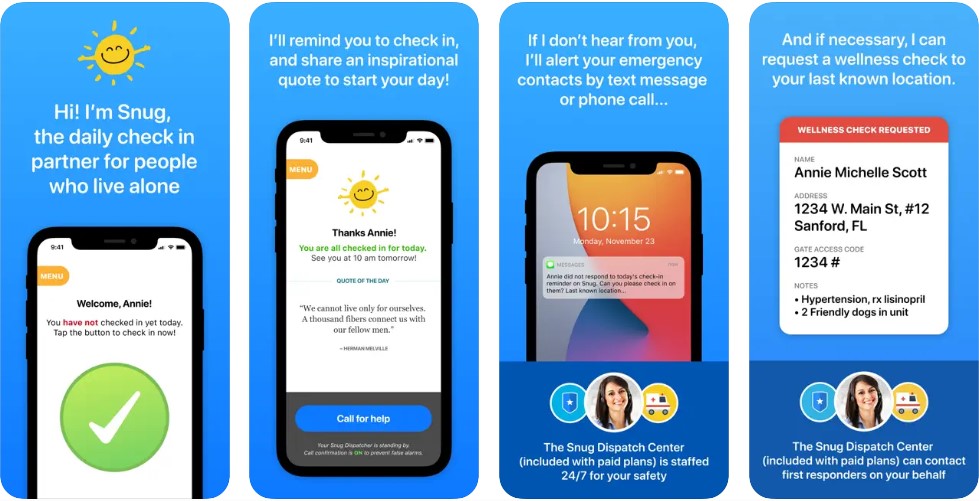
Snug Safety provides daily check-ins and emergency alerts. If something goes wrong, it quickly notifies emergency contacts. This feature gives both seniors and their families peace of mind, knowing help is available when needed.
4. CaringBridge
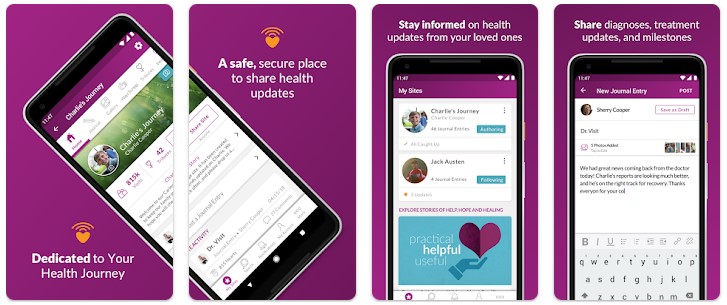
CaringBridge allows seniors to share health updates and stay connected with family and friends. It helps reduce feelings of loneliness by offering a way to keep loved ones informed and involved in their well-being.
5. GrandPad
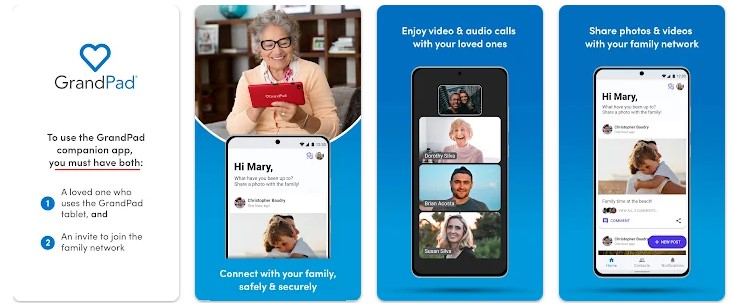
GrandPad is designed for easy use by seniors. It features large buttons, voice commands, and simple video calling. The app is user-friendly, making it easier for older adults to navigate and stay connected with others.
Conclusion
Using technology in elder care is a big step forward in meeting the needs of our aging population. These new tools and solutions greatly enhance the safety, independence, and overall well-being of our seniors. These advancements help with practical care and also create a more respectful and supportive environment for them. As technology keeps advancing, it’s important to focus on solutions that are both practical and easy to use. This way, elder care can keep up with the changing needs of seniors while remaining caring and efficient. Ultimately, this approach will improve their daily lives and offer the support they need for a better quality of life.
Looking To Develop A Senior Care App?
With over 10 years of experience, 50,000+ hours of coding expertise, and 200+ successful projects, Idea Usher is your ideal partner. Our team has developed numerous healthcare and fitness apps like Vezita, RBT, Allaya, CosTech Dental, etc., demonstrating our ability to deliver customized solutions that can meet your unique needs effectively. We always focus on combining advanced technology with user-friendly design to ensure impactful and practical solutions in our projects. If you are committed to improving care and daily life for seniors through innovative, well-designed applications, you are at the right place! Contact us today over a free consultation call to build an app that truly makes a difference in senior care.
Work with Ex-MAANG developers to build next-gen apps schedule your consultation now
FAQ
How to design a mobile app for the elderly?
Designing an app for older users should be simple and easy to use. Use large text, clear buttons, and fewer steps to complete tasks. Features like voice commands, help options, and bright colors with good contrast can make the app more accessible and user-friendly for seniors.
How much does health app development cost?
The cost of making a health app depends on the features and complexity. It usually ranges from $10,000 to $100,000. Extra costs come from security, updates, and integrating outside services. Apps with more advanced features will cost more to build and maintain.
Is the senior care industry growing?
Yes, the senior care industry is growing. More people are living longer, which increases the need for care. New technologies like remote care and medical support from home are helping this industry expand to meet the demands of aging populations.
How do you design for the elderly?
When designing for older adults, use large fonts, simple words, and clear visuals. Make sure buttons are easy to press, and avoid too many complicated features. High contrast between text and background helps readability. Simple layouts and voice options also improve accessibility.



